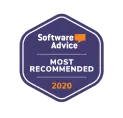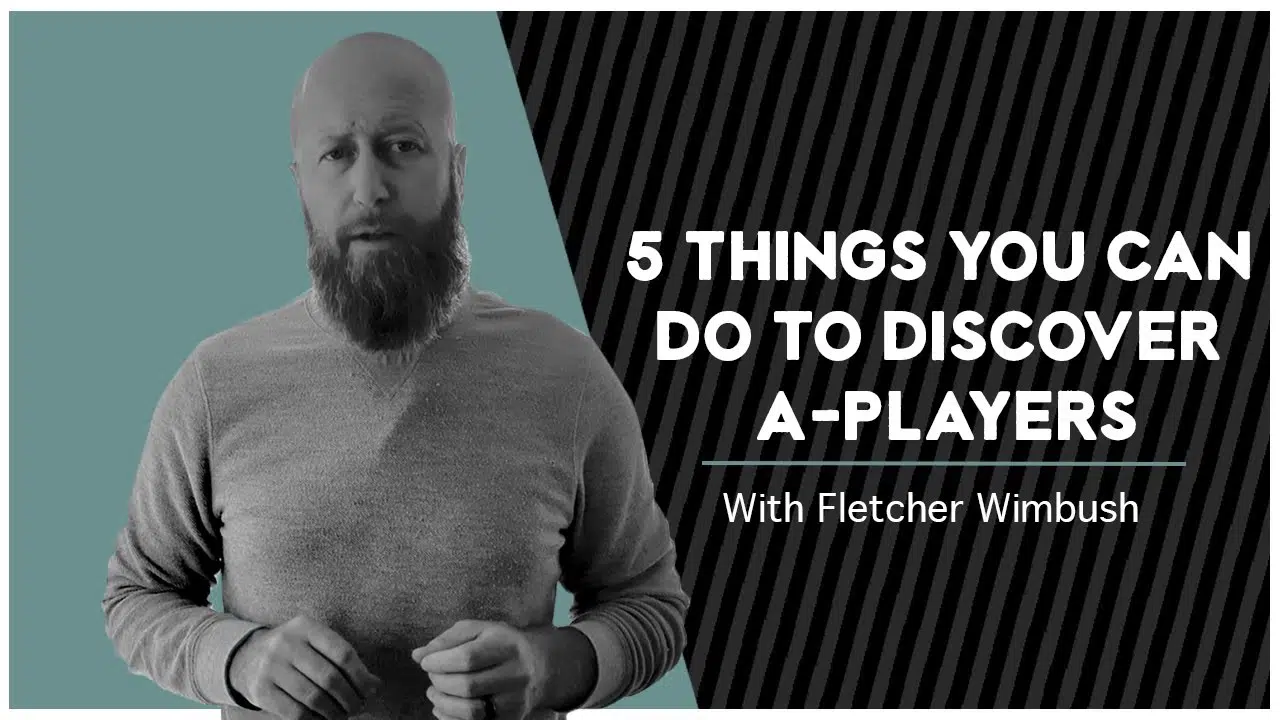Here’s the million-dollar question: How do you find the right people, and how do they find you?
And here’s my multi-million dollar answer: If your business stays focused on the 3 C’s, you will find each other.
I define the 3 C’s as Culture, Compensation, and Career growth. Others have defined the 3 C’s with words like character and competence. I can’t argue with those. They are valid points, but they tend to place too much emphasis on the candidates and what’s expected of them.
The recruitment strategy and retention of top talent involve a symbiotic partnership between the company and the candidate. As with any relationship, it needs to work for both parties. I’m going to take a closer look at each of the C’s, but first, let’s talk about our target: the A-player.
What is an A-player?
In his book, The A Player, Rick Crossland defines the term with these 5 points:
- An employee in the top 10% of their profession or on an industry-wide basis for the salary paid
- A person on your team who you would enthusiastically rehire
- The employees at an enterprise who drive all the profitability and growth
- A person of high integrity who delivers on commitments
- The employee every organization covets
So what do I think? I think all of Rick’s points are on point. But I don’t think it’s up to me or Rick or anyone else to define what an A-player is for your company. It’s up to you. Because the true definition of an A-player is the one that is true for your business.
After the first printing of his book, Rick Crossland added a sixth point to his definition:
- The employee who fits your company culture and models your core values and behaviors.
Okay, not to take anything away from his first five points, but point 6 is very important. Because point 6 is about how well an employee fits into your organization. And that is a huge, if not the hugest factor when you’re looking for A-players.
An A-player for your company is an employee who can help achieve your company’s goals. So I guess you can say the A stands for Achieve.
As Rick Crossland writes in his article on Recruiter.com, “A players are the most productive people in your organization. A little-known axiom in business is you win with the best team money can buy, meaning your available salary budget needs to be optimized with the absolute best talent at each and every position.”
He then says it another way: “A players deliver 2-3 times the productivity of B players for similar compensation. While lesser managers fret about paying a validated A player 10 percent more than a B player, simple math dictates that having one A player instead of two B players creates at least a 45-50 percent savings in salaries. Combined with the 2-3 times increase in productivity, there is an incredible value increase of around 700-1,000 percent!”
What’s the key to hiring A-players? Well, to start with, take a look at your job openings. For every opening, it’s up to you to determine what an A-player looks like for that role. Once you know who you’re looking for, it’s a lot easier to find them.
# 1: Culture
A-players don’t just want to join a company. They want to be part of a culture. A candidate will only thrive in your company if they feel a connection with the culture. They must feel like they can say, “I not only work here, I belong here.”
Every company has a mission, just as every candidate has a mission. Whether or not they are aware of it, and whether or not they’ve ever officially expressed it, they have at least a perception of their mission. They believe in something, and they have a desire to accomplish something significant in their professional life.
The first step of your A-player hiring process might include a meaningful discussion of your company’s culture, including the mission, vision, and shared company values. What is the mission of your business? What is your core purpose? What is your vision for the future of your business? What are your core values? What are the root beliefs that characterize your organization?
The mission, vision, and values of a company should not just be displayed on a nice poster in the breakroom. These core principles should be reinforced and celebrated daily, serving as words of reflection and inspiration for your workforce.
If a candidate’s values are in alignment with the company’s values, then the next question we ask is, why would this top candidate want to be a part of our culture?
What is your EVP?
An employer value proposition or employee value proposition (EVP) is the value a company offers to employees in return for the value those employees bring to the company. Think of it as a promise you make as an employer to your employees in exchange for the commitment your people bring to the team.
An EVP captures the essence of your uniqueness and helps the candidate evaluate his/her fit for your company before they consider applying for a position. A-Players know what they want from a prospective employer, and your EVP serves as a window into your company.
What is your reputation – your Employer Brand?
Your employer brand isn’t something you invent. It already exists. It’s your reputation as an employer, both externally and internally. And while you can’t create it, your company can manage it.
Employer Branding is the process of shaping, maintaining, and marketing your Employer Brand. The Employee Value Proposition serves as the foundation or framework for the employer brand, and the brand translates the message of the EVP into the external market. It tells the story of your company as an employer.
In her article in the LinkedIn Talent Blog, Sara A. Lybrand writes that an employer brand “communicates that your organization is a good employer and a great place to work, which boosts recruitment efforts and the engagement and retention of your current employees. Done well, employer branding will spark buzz around your company, and this buzz will attract motivated job seekers and an army of happy employees.”
#2: Compensation
What is the number one factor in a candidate’s decision to accept a job offer? By far, it’s compensation. What is my salary? What about the rest of the package? If I accept a job offer, what am I going to get? Of course, the other two C’s are important when it comes to who’s going to be a good fit. But compensation plays the biggest role in helping people achieve their desired quality of life and standard of living.
If your compensation is not competitive, you will not be able to compete in the war for talent.
So, if compensation matters more than anything, should we be totally transparent with salaries in our communications? Should we put salary information out there for all the world to see? Do we include it in our job postings and other job ads? Well, not so fast. Let’s think about this for a minute.
If you advertise compensation in your ads, your existing employees will see it, too. Would that raise any issues? What if the compensation you need to attract A-Players exceeds the compensation of people on your current roster? What if wage inflation forces you to raise wages across the whole workforce? Clearly, there are some good reasons for limiting details in external discussions of compensation. But keep in that it is increasingly becoming a candidate expectation to see salary information in job descriptions and advertisements.
The components of your compensation strategy
We can break compensation down into four parts. Depending on who you ask, you’ll see some variations in the parts, but there are usually about four. They could include base pay, variable pay, benefits, and rewards.
The editorial staff at Indeed defines it as the 4 Components of an Effective Compensation Strategy. That’s a good way to frame it because it’s important to view compensation as a strategy. After all, it is one of the 3 C’s, and the 3 C’s are a strategy to attract and hire A-players.
Our friends at Indeed break it down like this:
- Base pay
- Incentive pay
- Employee benefits
- Time off
Employee benefits are not only easier to market externally, they are also a key part of a total compensation package. To start with, health insurance has real, tangible value. It’s worth a lot of money to employees at every level of your company. On top of that, retirement plans and savings plans help employees envision a path forward and may inspire them to stay and grow with the company.
Many fringe benefits don’t cost the company a lot of money, but they’re worth a lot to the candidates. Take, for example, paid time off (PTO). Everyone loves PTO, including A-Players. Educational assistance is another benefit that has value to candidates. It not only equates to actual dollars in the form of tuition assistance or reimbursement, but it also sends a message to employees: We encourage your continuing development, and we would like you to keep growing with our company.
#3: Career Growth
A-Players didn’t become A-Players by being complacent. A-Players like to learn new things and take on new challenges. They like to keep moving onward and upward.
When a top candidate chooses your company, he or she is not just looking at your company as a place to work. They are envisioning a path forward. It’s the responsibility of your company to ensure that the employee keeps moving in that direction.
Performance evaluations
Performance evaluations should be conducted after an employee’s probationary period and on a yearly basis after that. These evaluations highlight the employee’s strengths, successes, and areas for growth. Employees can see how their performance aligns with the company’s expectations. They receive praise for a job well done and they can identify areas for growth.
Intrinsic rewards
Employees need to feel a sense of belonging and a duty to the company. They need to feel like the work they do makes a difference and that their contributions matter. They want to find meaning in the work they do. They don’t just want to be told that they have opportunities for personal and professional development. They want to see them for themselves.
Intrinsic rewards are the intangible rewards your employees get from doing meaningful work and doing it well. While extrinsic rewards, like compensation and bonuses, are controlled by the employer, intrinsic rewards come from within the individual. They achieve them through their own efforts. And when these rewards are achieved, employees experience a positive emotional reaction.
When you cover all the C’s, you can discover your A’s
If your goal is discovering and hiring A-players, the first thing you should do is define who an A-player is for your opportunity. Once you know who you’re actually looking for, then address the 3 C’s as they relate to that individual.
Emphasize the attributes of your company culture that would be attractive to your candidates. Put together a compensation package that is competitive and includes all the benefits and intrinsic rewards the position offers. Finally, make sure you have a plan in place to facilitate your new hire’s onboarding, training, and career growth. If you can cover every C for your candidates, you’ll find it much easier to hire those A-players.














